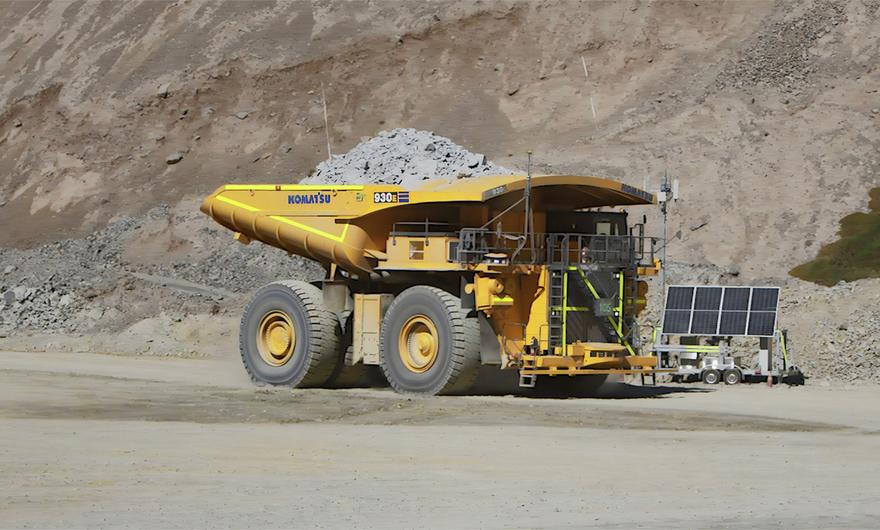Komatsu Ltd has long had a strong position in the Latin American mining market, and its Senior Executive Officer and President, CE Marketing Division, Yasuji Nishiura, recently gave some good insights into its depth of presence in the region in a presentation.
He says Komatsu has established a high-profit business model in the Latin American region by directly engaging with mining users through Komatsu owned distributor, facilitating investments, direct contact and contract services. The Latin American region has become the second-highest revenue-generating area for Komatsu after North America on a global basis.
Although the Latin American region accounts for approximately 10% of the global demand for construction and mining equipment, the Latin American sales ratio for Komatsu in FY2023 is projected to be 18%. Not only that, but within the Latin American market, the mining business holds a significant share of 70% of the total sales, compared to construction and others at 30%). This 70% for mining is broken down into equipment (16%), parts (24%) and service (30%).This is compared to the world as a whole where mining accounts for 43% of total sales, made up of equipment (14%), parts (18%) and service (11%).
The Komatsu TBM being developed for Codelco’s Chuquicamata Underground during QA testing

Nishiura then looked at some background. Komatsu’s first overseas export was to Argentina in 1955. In the 1970s, Komatsu established its first overseas factory in Brazil, marking a long history in the Latin American region. In recent years, Komatsu has expanded its direct distribution business model, primarily focused on mining, which was initially established in Chile in 1999, and later expanded to Mexico (2016), Peru (2009 – 40% share of Komatsu Mitsui Maquinarias Peru), Colombia (2016), Panama (2018) and Brazil (2013).
On a country by country basis, Komatsu has about 1,100 electric drive mining trucks operating in Chile alone, and about 100 large rope shovels, drills and underground equipment, plus about 350 large construction equipment like dozers and graders. Komatsu’s distributorship in Chile is the first directly operated distributorship in Central and South America. A large quantity of equipment and personnel have been deployed in Chile to support large-scale mining operations plus a business model has been established to provide direct sales & services to mining customers, resulting in a stable and high absorption ratio over 300%. Komatsu has over 9,000 employees in Chile which is its largest workforce after Japan – even ahead of the USA.
About 50% of the mining equipment in Chile is under a service contract. The main reman centre is in Antofagasta which carries out major component overhaul on engines, transmissions, cylinders etc. The same plant format used there has also been expanded to Mexico, Colombia, and Brazil.
Moving on to Brazil, in the construction equipment market, Komatsu has been utilising local distributors for operations since the 1970s (currently working with 7 distributors). In the mining sector, Komatsu acquired the mining division of a local distributor in Brazil in 2013 & established direct operations, followed by further investment.
Komatsu started production at its first overseas factory in Brazil in 1975 which is KDB Suzano. Production approximately 3,000 units of 34 different models per year, not only for the domestic market in Brazil but also for North America, Europe, and countries in Central and South America. This is mainly hydraulic excavators, wheel loaders and motor graders, in addition to being the worldwide manufacturing and distributing base for medium-sized crawler tractors exported to all continents.
To strengthen its relationship with major mining users, Komatsu is actively promoting investment and enhancing its operational bases. Its main repair centre in the north is Parauapebas but it will be opening a new, larger facility there in 2024 following an investment of over US$7 million. It also has a large remain centre in Sao Paulo and in Belo Horizonte has an office and repair centre, but is also building a new facility set to open in 2025.
Latin America has also been a trailblazer for Komatsu in terms of autonomous haulage – the first location in the world for any AHS with test operations at Codelco Radomiro Tomic in 2005 (which has been followed in 2022 by more trucks) then the first commercial operation at Codelco’s Gaby in 2008. Today Komatsu has over 100 AHS trucks in Latin America, mainly 930Es but also 980Es, across 9 sites – including Vale Carajas (2019) and Anglo American Los Bronces (2022). IM‘s understanding is that the full list of other sites covers Glencore Lomas Bayas, AMSA Centinela, Collahuasi, BHP Escondida and BHP Spence. Komatsu also opened an AHS support centre in Chile in 2020. From May 2023, commercial operation of large-scale ICT bulldozer remote control also began at Anglo American’s Minas-Rio iron ore mine in Brazil.
In hard rock cutting innovation, Komatsu is developing a Tunnel Boring Machine (TBM) aiming for a step change in underground mining operations. It features no blasting (safety), no batch (productivity), and no diesel (environmental friendliness). Building upon conventional tunnel excavation technology, it incorporates new capabilities such as sharp curve handling, reversing and crossing excavation. Quality assurance is expected to be completed by 2024, with a trial scheduled to begin in 2025 at Codelco’s Chuquicamata Underground in Chile.











